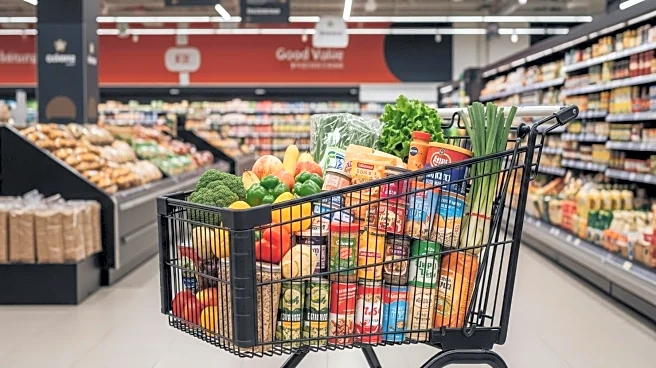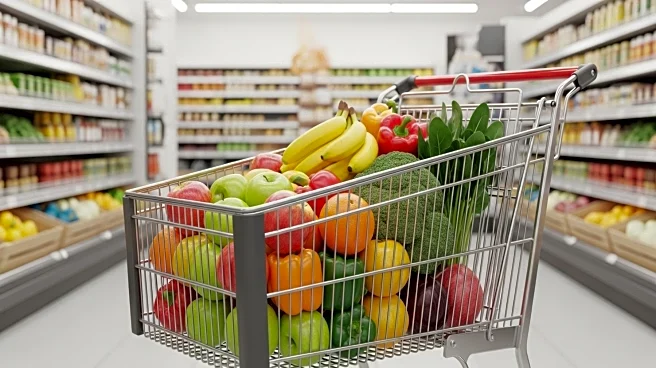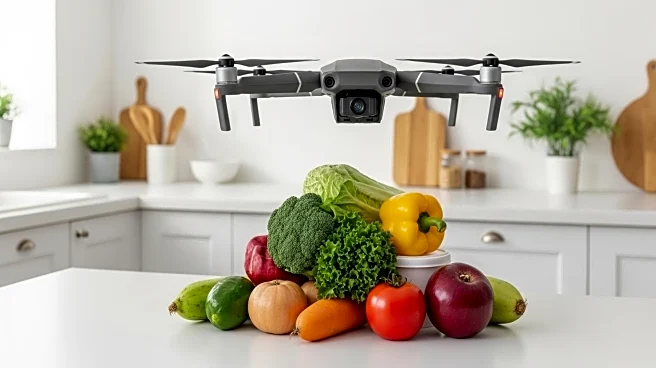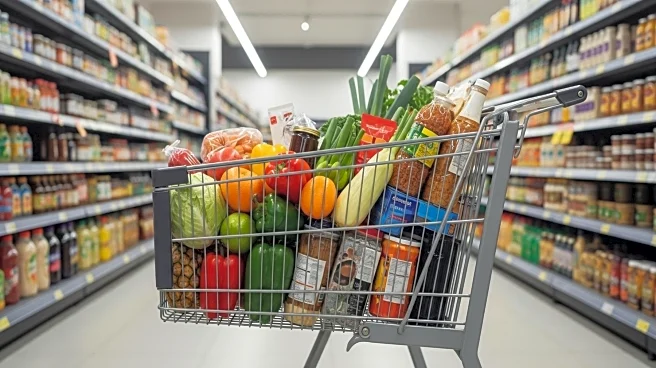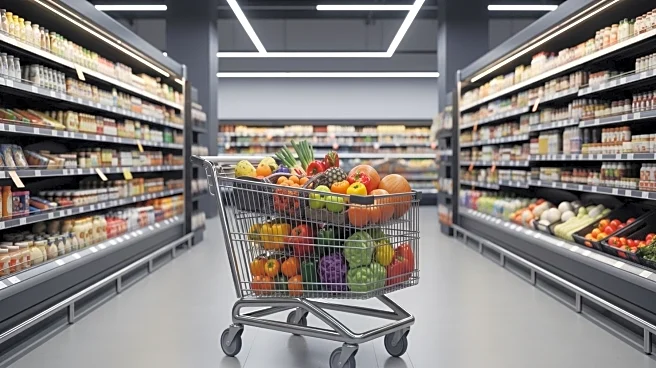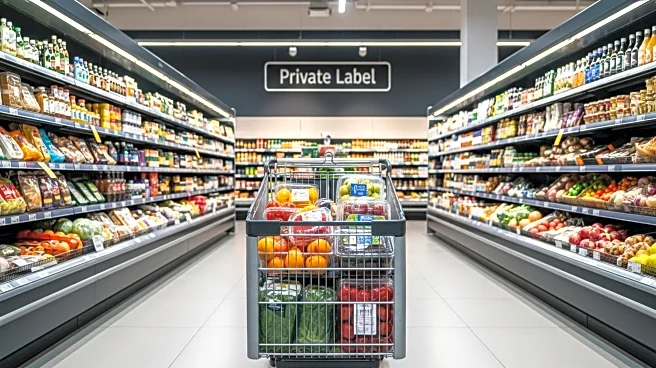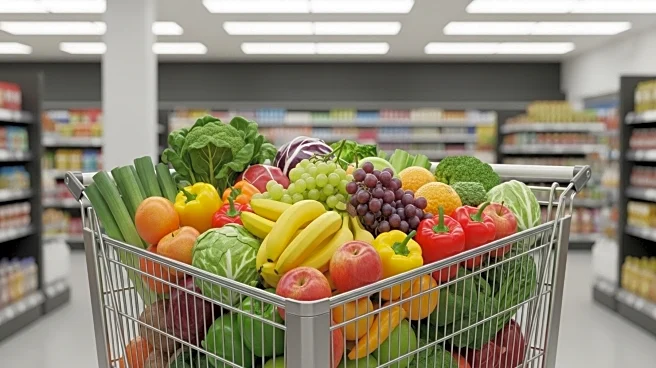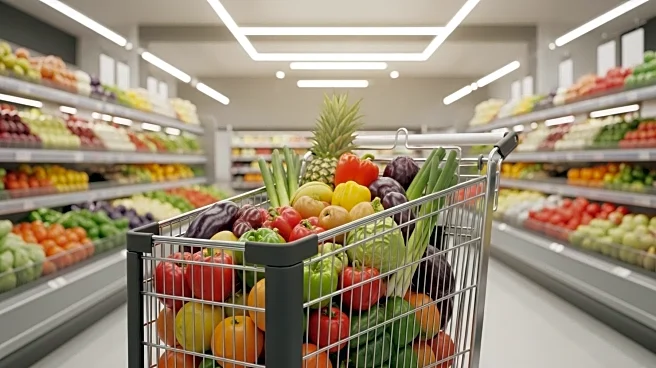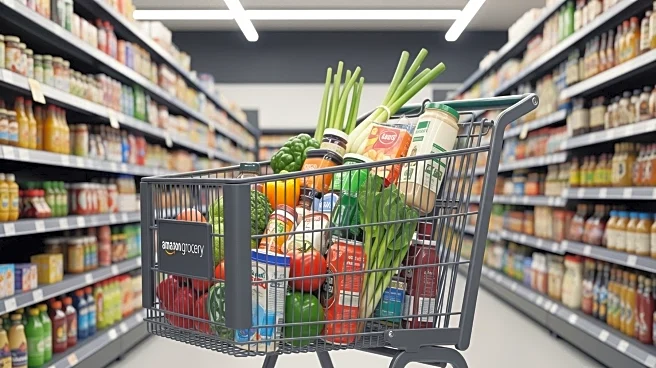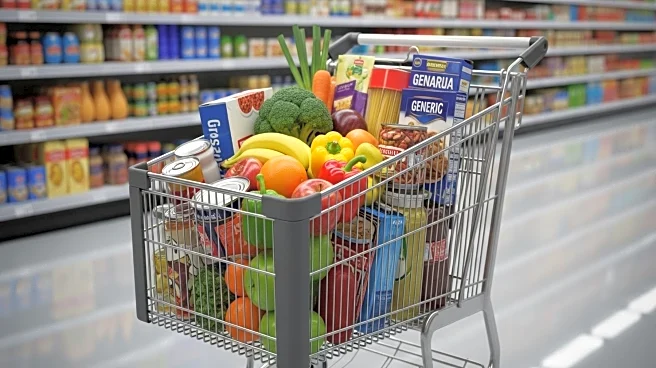What's Happening?
Amazon has introduced a new private-label brand called Amazon Grocery, which consolidates popular items from Amazon Fresh and Happy Belly into a single 'grocery essentials' collection. This new brand features over 1,000 items, including milk, olive oil, produce, meat, and seafood, with most products priced under $5. The launch is aimed at catering to consumers who are increasingly price-conscious. According to Jason Buechel, vice president of Amazon Worldwide Grocery Stores and CEO of Whole Foods Market, the initiative is designed to simplify the shopping experience while maintaining quality and value. The brand's packaging is noted for its modern and clean design, which also reduces plastic usage. Amazon Grocery products are now available nationwide through Amazon.com and Amazon Fresh, both online and in physical stores.
Why It's Important?
The introduction of Amazon Grocery is significant as it reflects the growing trend of consumers seeking affordable and convenient grocery options. By merging items from Amazon Fresh and Happy Belly, Amazon aims to streamline its offerings and enhance customer satisfaction. This move could potentially disrupt the grocery market by providing a wide range of affordable products, challenging traditional grocery retailers. The focus on price-conscious consumers aligns with broader economic trends where shoppers are increasingly budget-aware. Additionally, the emphasis on sustainable packaging could appeal to environmentally conscious consumers, further broadening Amazon's market reach.
What's Next?
Amazon plans to expand its product offerings under the new brand, with upcoming additions such as frozen pasta meals, pie fillings, and more frozen vegetables. The company is likely to monitor consumer response closely to adjust its product lineup and pricing strategies. As the brand gains traction, competitors in the grocery sector may need to reassess their pricing and product strategies to maintain market share. The success of Amazon Grocery could also influence other retailers to enhance their private-label offerings, potentially leading to increased competition in the grocery industry.

